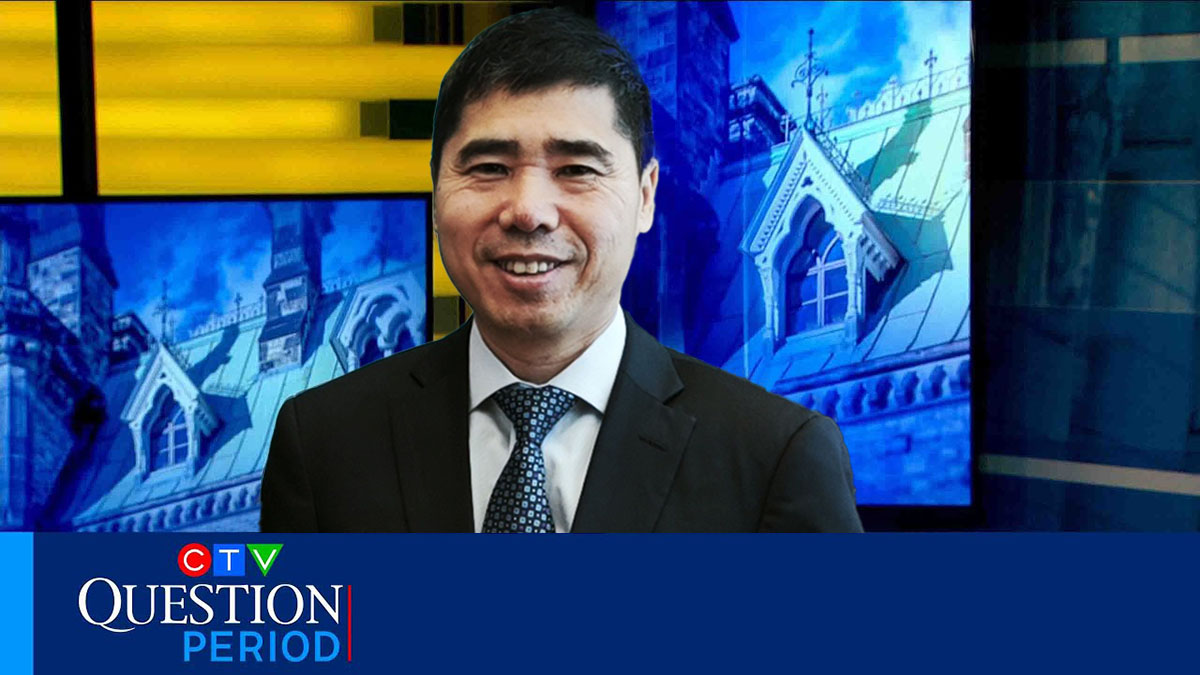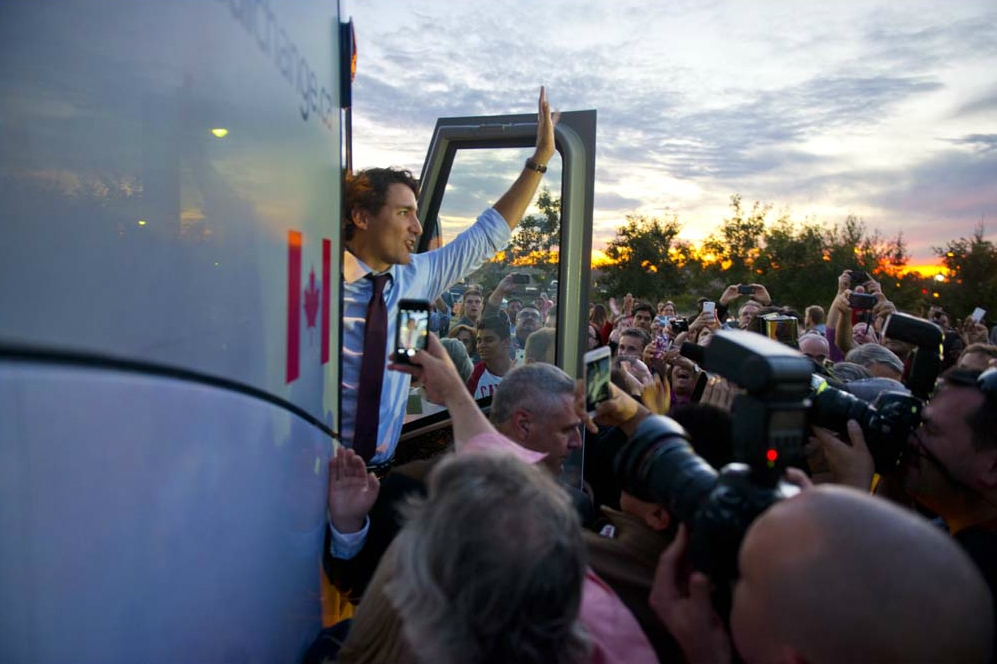
Chinese and Western Media Serve Different but Equally Vital Roles
In an age of information overload, where headlines move markets and tweets reshape political narratives, understanding how media operates across different political systems is more important than ever. Nowhere is this contrast more pronounced than between the media landscapes of Western democracies—like Canada—and China’s state-led model.
I recently watched the May 11th CTV Question Period interview between Vassy Kapelos and Chinese Ambassador to Canada, Wang Di. The conversation shed light on several key Canada-China bilateral issues and tensions. Kapelos asked informed and probing questions. In response, Wang spoke candidly about the relationship, urging both nations to focus on practical cooperation rather than ideological divisions. Wang said Canada should work with China in rejecting economic coercion and promoting fair trade, arguing that collaboration was in both nations interests and would enhance global stability. He underscored China’s commitment to strengthening diplomatic ties and fostering constructive engagement on key bilateral issues.
At one point, Kapelos pressed him on China’s use of the death penalty against Canadians involved in drug trafficking in China. Wang responded that drug trafficking is considered a serious crime in China due to its far-reaching societal harm and reinforced China’s zero-tolerance stance for drugs. (China along with 32 other countries has the death penalty if convicted for trafficking drugs). Wang did not reference or comment on Canada’s controversial approach to drug crime or its current drug crisis. (For context, over 50,000 Canadians have died from drug overdoses since 2016, with fentanyl involved in most cases).
Toward the end of the interview, Wang stated, “We are at a very important time in the Canada-China relationship, and one thing is very important—that is mutual trust, as you mentioned. To rebuild and deepen trust, both sides should make joint efforts to build positive sectors in our relationship. In this regard, I thank Canadian friends for their long-term support of China-Canada relations and look forward to continuing that support, including from the Canadian media.”
Kapelos responded, “I don’t necessarily know what that means, and I would point out that while you say the evidence doesn’t exist, the government has told Canadians something very different. There have been, you know, leaks of intelligence to show otherwise, but I will leave it on that note. I take the point you made, and I appreciate you making the time for the conversation.”
Rather than reducing this exchange to a simplistic contrast between “free vs. controlled” or “democratic vs. authoritarian” media, it is more insightful to examine how different societies define transparency, accountability, and the role of journalism. Wang’s remarks reflect China’s emphasis on stability, strategic cooperation, and a regulated media environment, while Kapelos’ response highlights the Western preference for independent scrutiny and open debate. Both approaches incorporate elements of transparency and accountability but operate within distinct political and cultural frameworks.
This interview is a perfect example that highlights how media systems are shaped by more than just government policies—they also reflect a country’s history, priorities, and institutions. Instead of dismissing one model over another, understanding these differences can provide deeper insight into how news is shaped in both Canada and China.
Philosophical Foundations: Individual Liberty vs. Social Harmony
At the heart of the divide is a fundamental philosophical difference.
In Western societies, particularly in Canada and the United States, the media is often described as the “Fourth Estate”— an independent watchdog that holds power to account and defends the public’s right to know. This stems from Enlightenment-era liberal thought, where individual rights, freedom of expression, and skepticism toward authority underpin the role of the press.
In China, the role of the media is built on a collectivist tradition rooted in Confucian values and Marxist-Leninist governance. The media is viewed as a tool for promoting social stability, national development, and ideological unity. Dr. Jiang Fei, a communications scholar at the Communication University of China, explains: “In China, the media is not merely a platform for free speech—it is a mechanism for consensus building and policy communication. The emphasis is not on adversarial journalism but on narrative cohesion for the greater good.”
Different Missions, Same Medium
Canadian media outlets operate within a relatively free market, with press freedom protected under the Canadian Charter of Rights and Freedoms. Editorial independence is considered a cornerstone of journalistic integrity, with journalists expected to challenge power, ask difficult questions, and report even when it conflicts with national or corporate interests.
However, over the past decade, The Globe and Mail, CTV (Bell Media), Postmedia, TorStar and other Canadian legacy media have become increasingly reliant on federal funding, raising concerns about their independence. The Liberal government has allocated hundreds of millions in subsidies to news organizations, including the Canada Media Fund ($154.1 million), the Canada Periodical Fund ($86.5 million), the Canadian Journalism Labour Tax Credit ($65 million), and the Local Journalism Initiative ($19.6 million) in 2024-25 alone. Additionally, the Canadian Journalism Collective (CJC) now distributes $100 million annually from Google under the Online News Act, further entrenching financial dependence. The CBC, which receives $1.4 billion in annual federal funding, has faced scrutiny over its editorial independence, particularly regarding its coverage of politically sensitive issues.
Despite this growing reliance on government-mandated payments, many legacy media outlets continue to present themselves as fully independent, creating an inherent contradiction. While they maintain the appearance of impartiality, their financial dependence on federal funding raises legitimate concerns about bias and influence. The issue is not just the funding itself but the reluctance to acknowledge its impact—an inconsistency that undermines public trust in Canadian journalism.
In China, media organizations such as Xinhua News Agency, People’s Daily, and CGTN are state-owned or state-aligned. While that may seem like a lack of independence from a Western perspective, these institutions see their role as informing the public in a way that supports national priorities such as poverty alleviation, public health, and economic development.
“There’s a misconception in the West that Chinese media simply propagates government talking points,” says Dr. Daniel Bell, Dean of the School of Political Science and Public Administration at Shandong University. “But it also plays a crucial role in conveying public sentiment to leadership and shaping policies through feedback loops. It’s more interactive than it appears.”
Censorship vs. Regulation
Censorship remains one of the most contentious issues in global media. Western critics often highlight China’s “Great Firewall” and its control over internet content as evidence of repression. It is true that certain topics—such as criticism of Party leadership and the status of Taiwan—are tightly controlled.
However, Western media is not without its own forms of regulation and bias. Corporate ownership, advertiser influence, and political alignment shape both the narratives presented and the issues covered. In the U.S., a 2024 Pew Research study found that nearly three-fourths of Americans viewed their media as biased or untrustworthy.
In Canada, while concerns about media bias are less pronounced, trust in news organizations has declined in recent years, particularly regarding coverage of Indigenous issues, foreign policy, and climate change. Public confidence in Canadian media is at an all-time low, with only 37 percent of Canadians expressing high trust in news outlets. The CBC, Canada’s publicly funded broadcaster, has faced scrutiny, including a formal complaint filed with the CRTC over its coverage of Gaza, which critics argue was systematically biased and failed to meet journalistic standards. Reports have pointed to instances where CBC coverage omitted key perspectives, leading to accusations of one-sided reporting.
These concerns reflect a growing disconnect between mainstream news outlets and the public they serve, highlighting the broader challenges of media credibility in both democratic and state-controlled systems.
“In both systems,” says Professor Min Jiang of UNC Charlotte, an expert on Chinese digital media, “there are gatekeepers—formal or informal—who shape narratives. The difference is in how transparent and acknowledged those mechanisms are.”
The Role of Journalism in a Multipolar World
As China continues to rise on the global stage, understanding its media system becomes not just a matter of curiosity but of necessity. For Canadians trying to make sense of China’s international actions—whether on trade, diplomacy, or climate—it is crucial to understand how the Chinese public receives information and how the media reflects national priorities.
Canadian media theorist Marshall McLuhan famously said, “Societies have always been shaped more by the nature of the media by which men communicate than by the content of the communication.” His point was that media systems—whether free or state-controlled—shape political discourse, cultural identity, and societal values more through their structure and influence than the actual content they deliver. In today’s digital age, where platforms and regulations constantly evolve, McLuhan’s perspective remains as relevant as ever.
China’s media serves a population of over 1.4 billion people, helping coordinate massive policy shifts, mobilize disaster relief, and promote public health—roles that are logistically and socially complex in a country of its size.
Ultimately, the most effective way to bridge the divide between Canadian and Chinese media paradigms is not through moral superiority, but through mutual understanding. There is value in independent journalism that scrutinizes power, just as there is purpose in media that promotes social cohesion. For readers and citizens in both systems, media literacy—not just about what we read, but about how media functions elsewhere—is the foundation of informed global citizenship.
In a world where narratives compete as fiercely as economies, the most powerful tools we can wield are perspective and curiosity. After all, this is why people read the media and watch the news in the first place.









